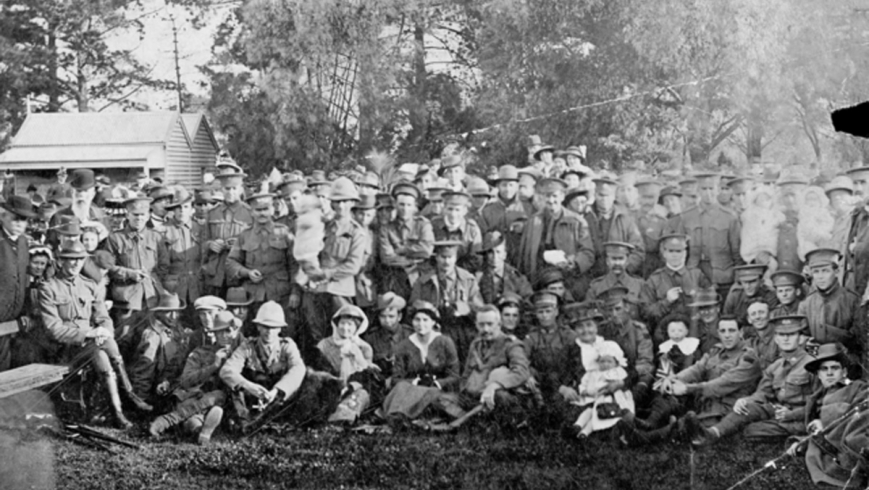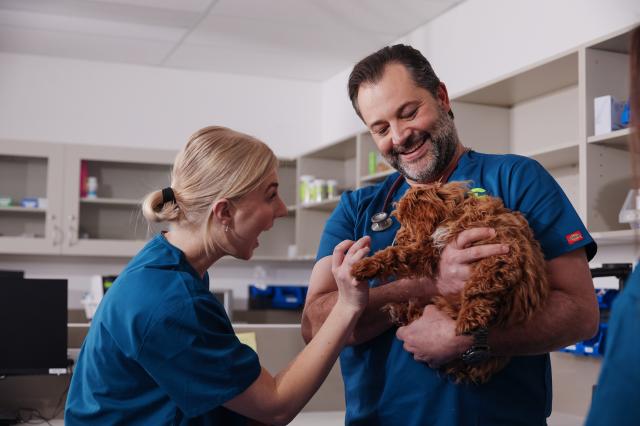As we prepare to commemorate the 100th anniversary of the Australian and New Zealand troops landing at Gallipoli, Cameron Tait shares the stories of three Werribee brothers, a grocer, a 24-year-old who lost his life as the end of the war was in sight and a courageous nurse from Little River who treated injured soldiers on the frontline.
More than 350 residents from Werribee and surrounding areas volunteered to serve in World War I and 60 paid the ultimate price.
The stories of all of the men and women from Werribee and districts who served during ‘The Great War’ are being compiled as part of the Wyndham Anzac Project.
Over the course of just 18 months, Samuel and Helen Swanton would face heartbreak no parents should have endure.
Three of their sons would go to battle – none would return.
John Swanton, a shearer by trade, was 26 when he joined the second wave of landings at Gallipoli on April 25, 1915.
Each solider carried a pack weighing about 32 kilograms and despite heavy fire, John and his mates fought for a foothold on the Peninsula.
A week later, he was the first of the Swanton boys to be killed.
To add to his family’s grief, no grave side was ever recorded, but he is remembered on the Lone Pine memorial at Gallipoli.
At his funeral service in Werribee, the presiding minister said: “The late Private John Swanton was a man in the best sense of the word. When others held back because of their fear of bullets, and then ridiculed the men who enlisted, Jack Swanton went forward at the call of King and country.
”A life of cheerfulness and usefulness has come to an abrupt end, but we thank God that Werribee has some young men, who for the sake of the women and children and even for slackers, have shown once again that ‘Greater love hath no man than this, the he lay down his life for his friends.”

George Beamish Swanton with wife Nellie and daughter Joan. Photo: Australian War Memorial
The oldest of the brothers, George Beamish Swanton, 33, enlisted at Werribee on March 3, 1915, and following basic training at Broadmeadows, he joined the Mediterranean Expeditionary Force at Gallipoli on September 6. The fighting was so dangerous the battalion was evacuated to Egypt.
Promoted to acting corporal while his unit was guarding Suez Canal, on the night of June 29-30, 1916, records show George took part in a highly successful raid on enemy trenches. Less than a month later, he was killed in action at Pozieres.
The youngest brother, Henry, a carpenter, was 22 when he enlisted on January 4, 1916, in Melbourne.
According to his enlistment papers, he was a slight young man with blue eyes, a fresh complexion and light brown hair.
Assigned to the 19th Depot Battalion, Henry was sent to the Suez Canal on April 15, 1916. The battalion left Egypt to join the British Expeditionary Force in France, landing at Marseilles at the end of June. On August 4, Henry and his battalion launched a major offensive which became known as the Battle of the Somme, in which more than a million men were killed, wounded or missing in action.
Private Swanton was killed at Flers on November 2, 1916, and like his brother John, no grave site was ever recorded, but he was awarded the British War Medal and Victory Medal.
Before enlisting in the Australian Imperial Force on February 10, 1916, Harry Delaney was a grocer with Comben and Co in Werribee. Within a month, he embarked on the HMAT Ayrshire bound for Plymouth and arriving in September, he joined the 2nd Training Battalion.

Henry Delaney. Photo: Courtesy of Australian War Memorial
A signaller, he was moved to Etaples in France on April 10 1917 and 11 days later he was killed in action on the Somme. With no known grave, he is commemorated at the Villers-Bretonneux memorial.
Born in Romsey in 1894, John Alexander Hunter McKeown, the eldest of three brothers, relocated with his family to Werribee at the turn of the century.
Arriving in France with the 7th Battalion in November, 1916, he spent a harsh winter on the Somme, during which More than 20,000 Australians were evacuated for treatment for exhaustion, frostbite and trench foot.
One of those casualties was John McKeown who was so ill he was evacuated to England for treatment.
He eventually joined the Australian Flying Corps and flew a SE5a experimental aircraft – a timber-framed British designed single-seater fighter with a top speed of 222 km/h.
On October 9, 1918, Lieutenant McKeown shot down a German aircraft, then only five days later, he failed to return from an offensive patrol near Lille.
He was killed only four weeks before the signing of the armistice between Germany and the Allies.
Catherine ‘Kit’ McNaughton, was one of 39 Little River residents who serve their country during World War I, with 12 killed in battle.
Kit enlisted in 1916 joining more than 2500 Australian nurses posted overseas to tend to the sick and injured at Lemnos, behind the frontline on the Western Front.
During the Battle of the Somme almost her entire time was spent patching up wounded Germans. She was mentioned in despatches for ‘distinguished and gallant service and devotion to duty in the Field, France’ on 18 November 1916, and awarded the Royal Red Cross, 1st Class.
In Janet Butler’s book, Kitty’s War, she wrote that after two years of harrowing, relentless work close to the frontline dealing with the death and disability of hundreds of young men, Kit requested she stay and work in Britain and in 1918, was promoted to the position of theatre sister at Queen Mary’s Hospital – the first Australian nurse to work in the emerging area of plastic surgery.
Returning home, she found adjustment to civilian life difficult. In 1953, she died of a heart attack and is buried at Werribee cemetery.
In noting her passing the local newspaper dubbed her ‘The Rose of No Man’s Land’, which was one of the most popular songs of the post-war period which resonated with returned men, in particular those who had been wounded or hospitalised during the war.
The song refers to the Red Cross Nurse as the one ‘red rose’ the soldier would come to know and rely upon while recovering away from the frontline and the second chorus of the song reads: It’s the one red rose the soldier knows, It’s the work of the Master’s hand; Mid the War’s great curse, Stands the Red Cross Nurse, She’s the rose of “No Man’s Land”.
In 1967, Kit’s daughter Patricia Barnes, who had been living with her mother in the Greaves Street house, wrote to the Central Army Records Office, at the Albert Park Barracks, enquiring whether one of the new medals that were being distributed to all Anzacs could be made available to their mother.
So this Anzac Day and forever more, lest we forget.
Related
Anzac Day dawn service in Werribee
Anzac Day centenary: Diggers from the west
Anzac Day centenary: Friends born of the battlefields
Werribee’s Anzac march draws record crowd | Gallery
Anzac Day centenary: Werribee pupils entrenched in history







